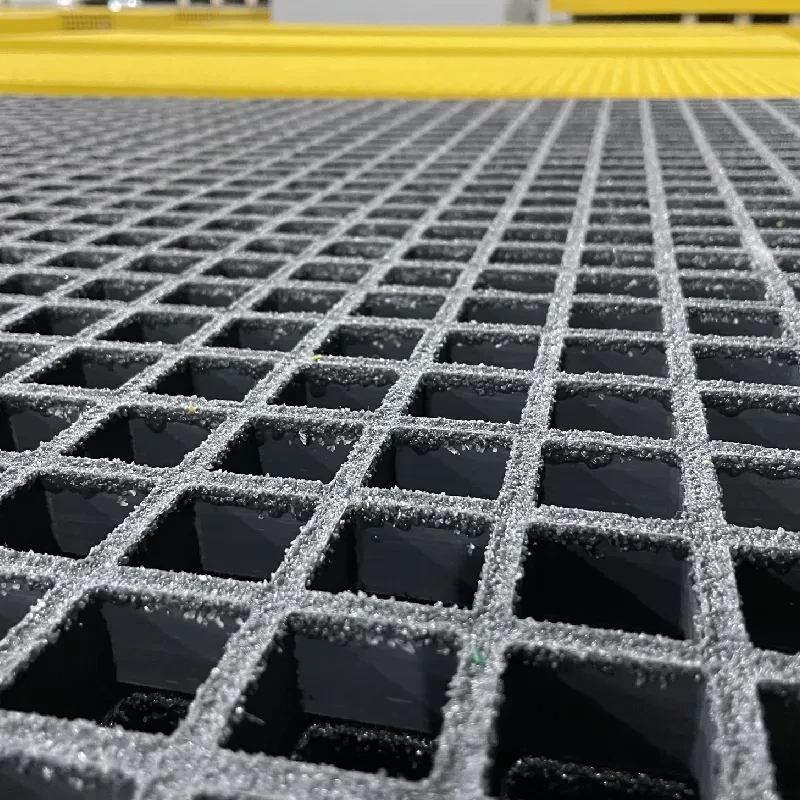loading...
- No. 9, Xingyuan South Street, Dongwaihuan Road, Zaoqiang County, Hengshui, Hebei, China
- admin@zjcomposites.com
- +86 15097380338
- Welcome to visit our website!
Durable Plastic Grating with Fiberglass Reinforcement for Enhanced Strength and Longevity
Fiberglass Reinforced Plastic Grating A Versatile Solution for Modern Applications
In recent years, the construction and manufacturing industries have seen significant advancements in materials technology, leading to the development of innovative solutions designed to improve efficiency and performance. Among these advancements, fiberglass reinforced plastic (FRP) grating has emerged as a popular choice due to its unique characteristics and advantages. This article explores the properties, applications, and benefits of FRP grating, highlighting its role in modern construction and industrial environments.
Fiberglass reinforced plastic grating is a composite material made from fiberglass strands and a resin matrix, typically polyester or vinyl ester. This combination creates a lightweight but robust structure that can withstand heavy loads and resist corrosion, making it an ideal material for various applications. The manufacturing process involves layering fiberglass fabric with resin and curing it, resulting in a non-skid surface that enhances safety, especially in environments where slips and falls are a concern.
One of the most notable features of FRP grating is its exceptional strength-to-weight ratio. Compared to traditional materials like steel and aluminum, FRP grating is significantly lighter, making it easier to handle and install. This property not only reduces labor costs but also minimizes transportation expenses, particularly in large projects. Additionally, the corrosion resistance of FRP grating makes it an attractive option for industries that deal with harsh chemicals, such as wastewater treatment, chemical processing, and marine applications.
fiberglass reinforced plastic grating

The versatility of fiberglass reinforced plastic grating is evident in its wide range of applications. Commonly used in walkways, platforms, and stair treads, FRP grating provides a safe and durable surface for both pedestrian and vehicular traffic. Its applications extend to industrial settings, including oil refineries, power plants, and food processing facilities, where it can be used in areas exposed to moisture, chemicals, and mechanical wear. Moreover, FRP grating can be customized to fit specific design requirements, making it suitable for a variety of environments, from commercial buildings to offshore oil rigs.
An additional advantage of FRP grating is its low maintenance requirements. Unlike metal grating, which can rust and degrade over time, FRP grating retains its structural integrity and appearance even after prolonged exposure to the elements. This characteristic significantly reduces maintenance costs and downtime, allowing businesses to focus on their core operations without the burden of frequent repairs or replacements. Furthermore, the non-conductive nature of fiberglass makes FRP grating an ideal choice for electrical applications, as it minimizes the risk of accidental shocks or short circuits.
Sustainability is another aspect that underscores the growing popularity of fiberglass reinforced plastic grating. As environmental concerns rise, the construction industry is increasingly turning to materials that minimize ecological impact. FRP grating can be manufactured using recycled components and is itself recyclable at the end of its lifespan. This aligns with global efforts to promote sustainable practices and reduce waste in construction and manufacturing processes.
In conclusion, fiberglass reinforced plastic grating offers a plethora of benefits that make it an excellent choice for various industrial and commercial applications. Its lightweight, durable, and corrosion-resistant properties provide an efficient solution for businesses seeking to improve safety and reduce costs. With its versatility and low maintenance requirements, FRP grating is poised to play a significant role in the future of construction and industrial environments. As the demand for advanced materials continues to grow, FRP grating will undoubtedly remain at the forefront of material innovation, contributing to safer, more efficient, and sustainable operations across a multitude of industries.
-
The Rise of FRP Profiles: Strong, Lightweight, and Built to LastNewsJul.14,2025
-
SMC Panel Tanks: A Modern Water Storage Solution for All EnvironmentsNewsJul.14,2025
-
GRP Grating: A Modern Solution for Safe and Durable Access SystemsNewsJul.14,2025
-
Galvanized Steel Water Tanks: Durable, Reliable, and Ready for UseNewsJul.14,2025
-
FRP Mini Mesh Grating: The Safer, Smarter Flooring SolutionNewsJul.14,2025
-
Exploring FRP Vessels: Durable Solutions for Modern Fluid HandlingNewsJul.14,2025
-
GRP Structures: The Future of Lightweight, High-Performance EngineeringNewsJun.20,2025
